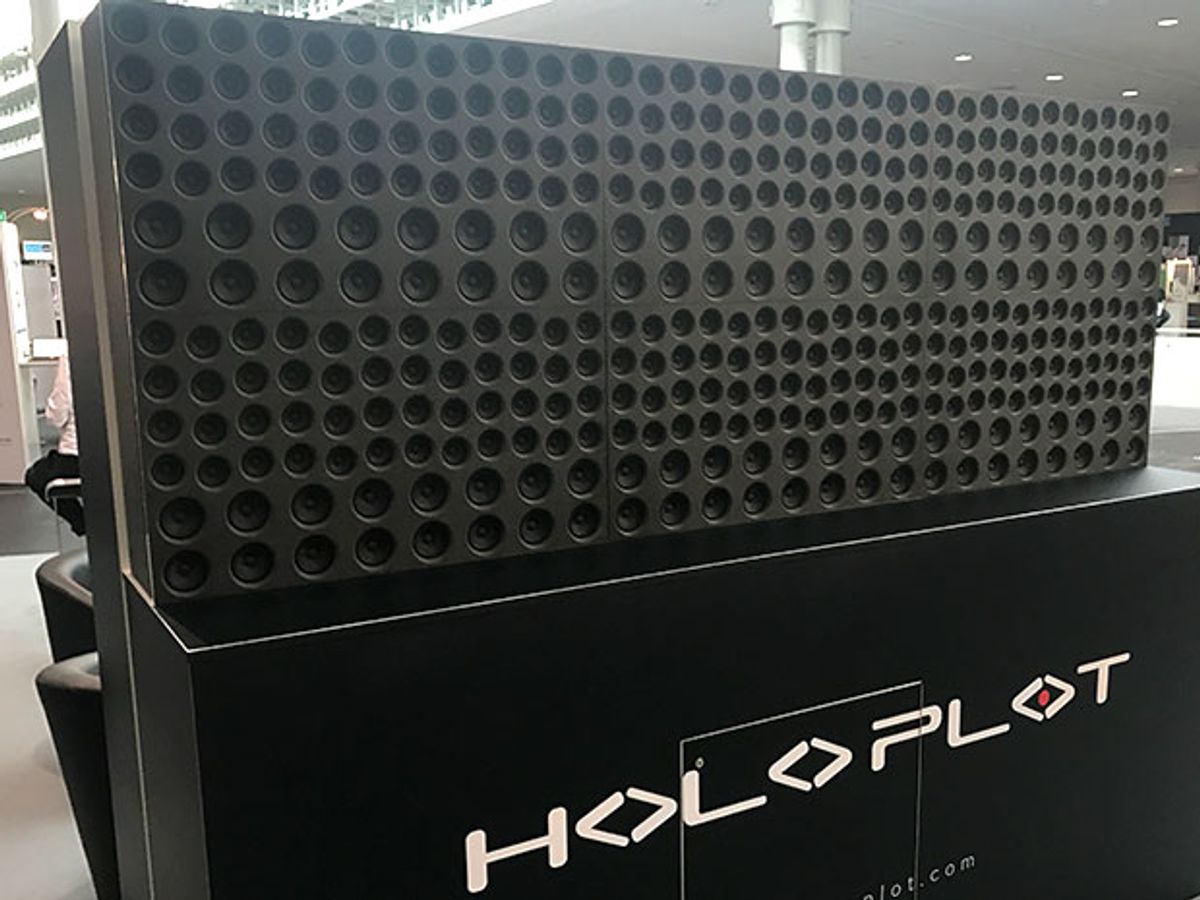A Berlin startup named Holoplot has built a premium audio system that it says can send one song or announcement to one corner of a room, and an entirely different message or tune to another area of the same room—without any interference between the two.
Holoplot is testing its technology in major train stations throughout Germany, where it says the system can send up to 16 message to separate gates at once, all at the same frequencies. It ran its first pilot at Frankfurt Hauptbahnhof, Germany’s largest train station, in December.
“These tests went very well, especially the intelligibility—measured by an independent company—and the customer satisfaction—measured by a customer survey—increased,” says Fanny Schröter of Deutsche Bahn, Germany’s state-owned train operator.
Holoplot forged a relationship with Deutsche Bahn through its accelerator program, called DB mindbox. Deutsche Bahn operates more than 5,400 train stations throughout Germany. Roman Sick, CEO of Holoplot, says the company will perform a test in another major station sometime in the next two months.
“They have a big problem because train stations are an acoustical nightmare in terms of reflections,” Sick says.
During the Frankfurt test, Sick says 84 percent of survey respondents agreed with the statement that Holoplot’s system was “by far the better system” and 14 percent agreed with the statement that it was “a better system” than the original loudspeakers. These surveys were gathered by an independend market research company.
Separately, Sick says Holoplot consistently achieves scores above 0.75 on the Speech Transmission Index, which is a measure of speech quality that is often used in audio engineering. Scores range from 0 (the worst) to 1 (the best) and Deutsche Bahn tries to maintain scores of at least 0.5 in its train stations.
I saw Holoplot’s system on display earlier this year at CeBIT while on a press tour with Germany Trade and Invest. The largest version uses 64 modules with a total of 4,096 transducers to produce flat, planar waves that can be narrowly defined and more easily steered than typical sound waves, which are spherical in shape and spread out in all directions, like ripples in a pond.
When two modules (or speakers)—each of which contains 64 transducers—in the system generate separate sound waves, the interaction of those waves can produce a third wave at an angle tangential to the original waves. This is the same phenomenon that makes it possible for phased arrays to steer wireless signals by producing radio waves on different parts of the array (see 2:45 in this video).
When multiple speakers in Holoplot’s system generate many sound waves, they form new wave fronts that can take on whichever shapes and angles the operator desires. This shape-shifting ability is related to the Huygens-Fresnel principle which states that any wave front results from the many smaller wavelets that produce it.
The system can also produce concave wave fronts, which Sick says allows them to “merge” their energy at a particular point, called a focus point, in a room. “The technology we've developed allows us to control sound very precisely, similar to light,” he says.
Each transducer in the system is assigned its own IP address and managed through software. The software also allows the operator to define points in the room (such as the entrance to a gate) during setup, which can later be targeted with a particular message or soundtrack.
In a demonstration at CeBIT, Sick used the company’s control panel on his iPad to program a sound beam with a musical track to target a spot on the trade show floor about 20 meters away. As we walked to the spot, we could hear the track clearly through the din of the trade show. When I took a few steps to the left or to the right, the music faded.
Next, Sick programmed two announcements, one in German and one in English, to target two spots off to the side of the system, in the center of a walkway near his booth. As I moved from one spot to the other, the language of the announcement shifted with no interference between the two.
Holoplot just began selling its systems and they’re not cheap, starting at €60,000 euros. The company hopes the premium product will catch on with professional clients and large venues. This month, Holoplot ships its first units to customers.
Sick says their systems work best for spaces that are 150 square meters or larger in size, and which are acoustically complex, meaning they are multi-purpose spaces or could otherwise benefit from the ability to send multiple songs or messages at once.
Holoplot, which has six employees, has raised €3 million euros in funding over the past five years, and is currently speaking with investors for a Series A round. In March, it won the SXSW Interactive Innovation Award for music and audio.



